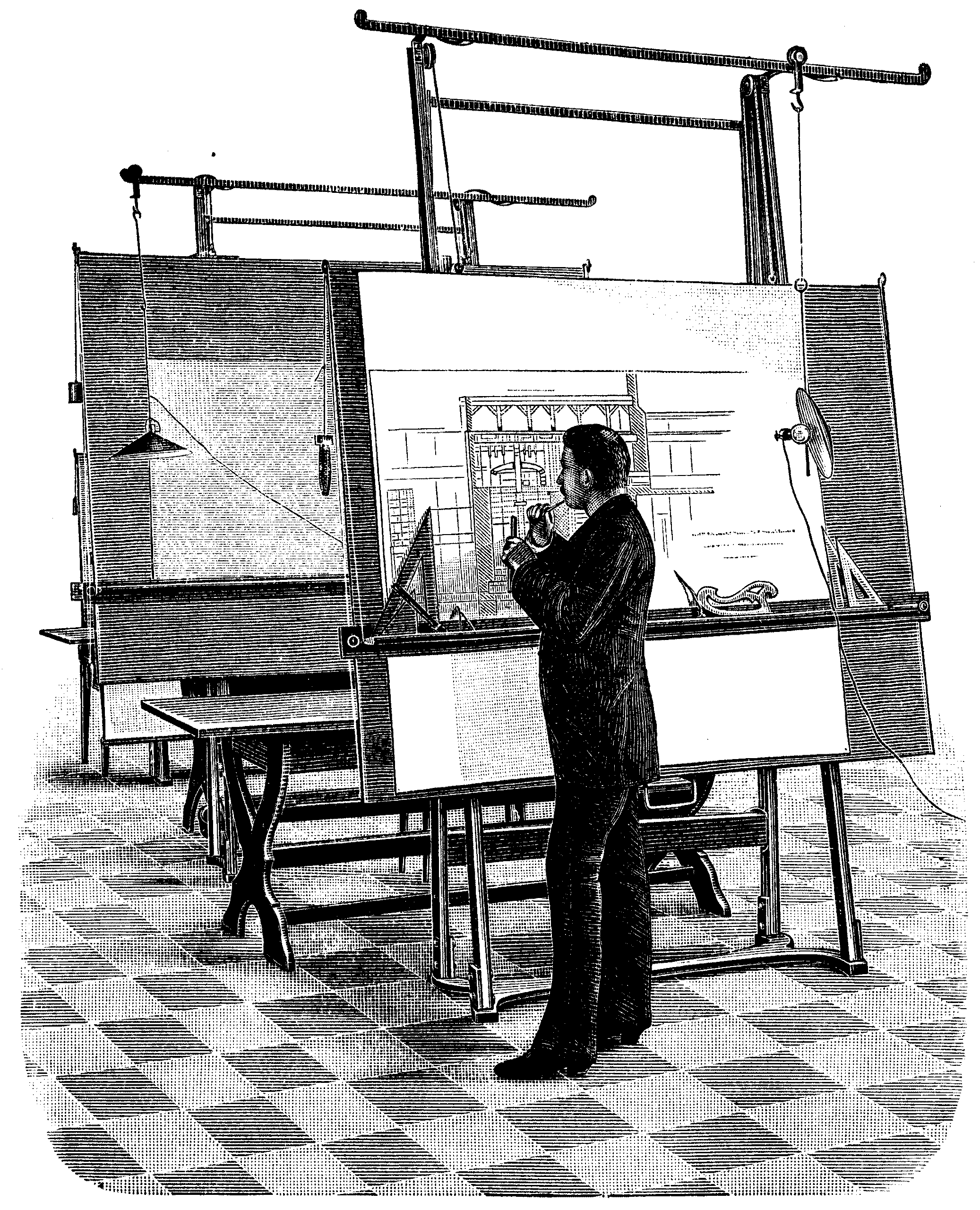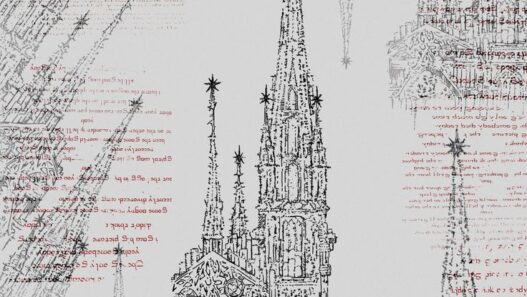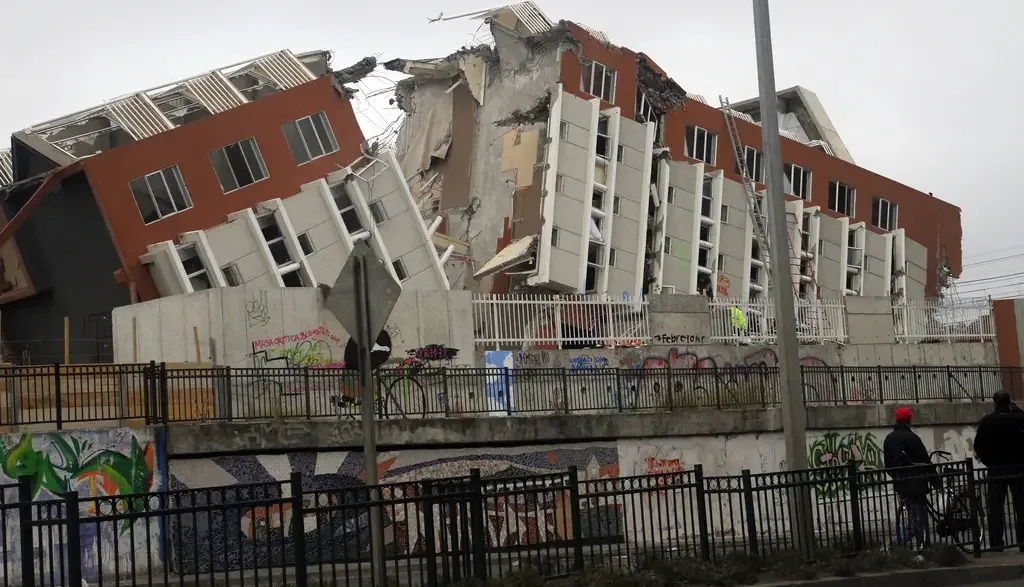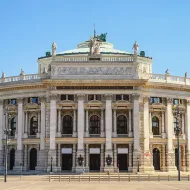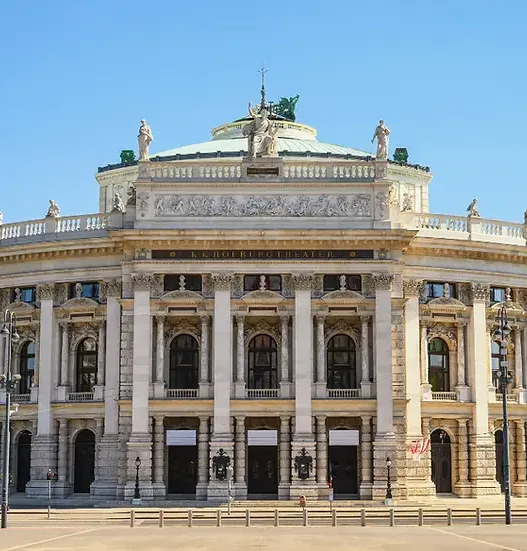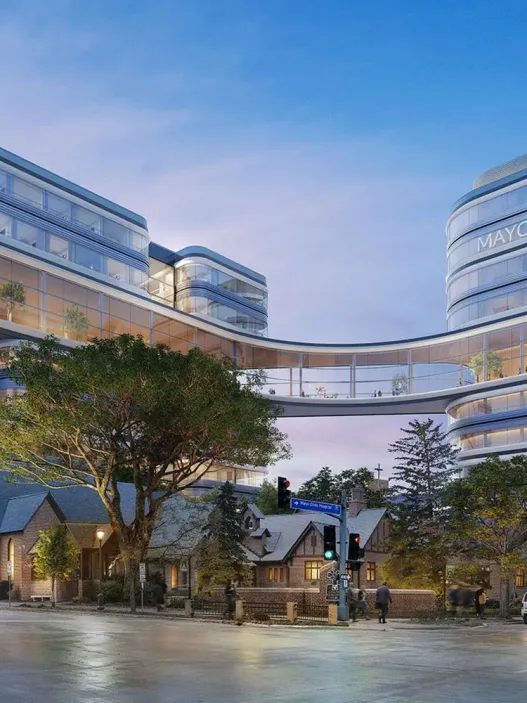Santiago, Chile’s vibrant capital, is a city where modernity and history intertwine. Nestled between the Andes and the coastline, the city has a unique architectural landscape that reflects its rich cultural heritage and the challenges of its geographical location. Known for its striking skyline dominated by glass towers and historic buildings, Santiago’s architecture tells a story of resilience, adaptation and innovation. As the city continues to grow, architects and urban planners are increasingly focused on creating structures that can withstand natural disasters, especially earthquakes, making Santiago a leader in earthquake-resistant innovation.

Historical Context
Santiago’s architectural evolution has its roots in its colonial past. Founded in 1541, the city initially exhibited Spanish colonial architecture, characterized by adobe walls and tile roofs. Over the centuries, Santiago has transformed significantly, influenced by a variety of architectural styles, including neoclassical, modernist and contemporary designs. Each era has left its mark, but the city’s vulnerability to seismic activity has always been a pressing concern. Major earthquakes, such as the devastating tremor in 2010, have led to a re-evaluation of building practices and urban planning, resulting in a shift towards more robust architectural solutions.
Cultural Significance
Architecture in Santiago is not only about aesthetics; it also reflects the cultural identity of its inhabitants. The blend of traditional and modern design reflects the Chilean spirit, embracing progress while demonstrating a commitment to heritage. Buildings such as the Plaza de Armas and Palacio de La Moneda bear witness to the country’s history and governance, while contemporary structures such as Gran Torre Santiago symbolize the city’s aspirations for the future. This dynamic interplay between old and new fosters a sense of pride among residents and makes Santiago a living canvas of cultural expression.
Overview of Earthquake Challenges
Santiago is located in a seismically active region, making earthquakes an ever-present threat. The city has experienced a number of major earthquakes that have caused loss of life and extensive material damage. The challenges posed by these natural disasters require architects and engineers to constantly innovate. This earthquake, one of the strongest in the country’s history, exposed vulnerabilities in many existing structures and created a nationwide push to improve safety standards in construction. This urgency has catalyzed the development of advanced engineering techniques and building materials designed to absorb seismic energy and minimize damage.
The Importance of Resilient Architecture
Resilient architecture goes beyond mere survival; it represents a proactive approach to design that anticipates and mitigates the effects of natural disasters. In Santiago, this means integrating flexible building structures that can sway with seismic forces rather than resist them. Innovations such as base isolators, which allow a building to move independently of ground motion, and energy dissipating materials that absorb vibrations are becoming standard practice. These developments not only protect lives, but also preserve the city’s architectural heritage, allowing old and new buildings to coexist harmoniously.
Urban Development Vision
Santiago’s vision for the future includes a commitment to sustainable urban development that prioritizes resilience. The city actively participates in initiatives that promote green building practices, smart city technologies and community participation in urban planning. Santiago aims to set a precedent for other cities around the world by fostering an environment where architecture adapts to the realities of climate change and seismic risks. This forward-thinking approach not only improves the quality of life for residents, but also inspires global discussions on disaster preparedness and urban resilience, positioning Santiago as a beacon of innovation in the face of adversity.
As a result, Santiago’s architectural landscape is a testament to its rich history and cultural significance, shaped by the urgent need for earthquake resilience. As the city evolves, its commitment to innovative and sustainable architecture promises to create a safer, more vibrant urban environment for future generations.
Santiago, Chile is a city shaped by its natural environment, particularly its location on the Pacific Ring of Fire, where seismic activity is a constant reality. This geographical challenge has stimulated remarkable architectural innovations aimed at creating buildings that can withstand earthquakes while continuing to provide aesthetic and functional value. In this survey of Santiago’s architectural landscape, we examine the key innovations that emerged in response to this challenge, showing how durability can coexist with beauty and utility.
Key Architectural Innovations
Seismic Design Principles
Seismic design principles underpin earthquake-resistant architecture. These principles focus on understanding how buildings respond to ground movements during earthquakes. Architects and engineers in Santiago use a variety of techniques to increase the stability of structures. One of the main approaches is the use of flexible building materials that can absorb and dissipate seismic energy. This flexibility allows a building to sway without collapsing, reducing the risk of catastrophic failure.
The concept of mass and stiffness is also very important. Tall buildings often use a device called a “tuned mass damper”, which counteracts earthquake forces by shifting the weight in the opposite direction to the movement of the building. This innovative solution creates a more stable environment for building occupants, ensuring safety and comfort even during tremors.
Real-world examples abound in Santiago, such as the iconic Gran Torre Santiago, which not only serves as a symbol of modern Chile, but also showcases these seismic design principles in action. Prioritizing safety through thoughtful design, the architects have created a city that embraces seismic reality rather than fearing it.
Advanced Material Use
The evolution of materials has played an important role in Santiago’s architectural flexibility. Traditional building materials, while beautiful, often lack the strength and flexibility to withstand seismic forces. In response, architects have turned to advanced materials such as reinforced concrete, steel and innovative composites.
Reinforced concrete, for example, is a fundamental element of modern construction. The combination of the compressive strength of concrete and the tensile strength of steel creates a powerful synergy that can withstand the violent shaking of an earthquake. Materials such as shape memory alloys, which can return to their original shape after deformation, are also being explored for their potential in seismic applications.
Santiago’s architectural landscape is increasingly defined by these advanced materials. The use of glass and lightweight metals not only enhances aesthetic appeal, but also contributes to structural integrity. Buildings like Centro Costanera exemplify how modern materials can create visually striking forms while ensuring safety in a seismic zone.
Innovations in Structural Engineering
Innovations in structural engineering have changed the way buildings are designed and constructed in Santiago. Engineers now use computer simulations and modeling to predict how structures will behave during seismic events. This technological advancement allows for fine-tuning of the design, ensuring that every element of a building contributes to its overall resilience.
One notable innovation is the use of base isolation systems. These systems involve placing a building on flexible bearings that absorb seismic waves, effectively decoupling the structure from ground motion. This technique has been successfully applied to several buildings in Santiago, allowing them to remain stable even during significant earthquakes.
Furthermore, advances in analytical methods allow engineers to design structures that optimize the use of materials while improving performance. The integration of these innovations not only improves safety, but also promotes sustainability by reducing waste and resource consumption.
Adaptive Reuse of Historic Buildings
Santiago’s rich architectural heritage presents both challenges and opportunities when it comes to earthquake resilience. Many culturally significant historic buildings were not designed with modern seismic standards in mind. However, architects are increasingly embracing the concept of adaptive reuse, which transforms these buildings into safe and functional spaces while preserving their historic integrity.
This approach involves retrofitting historic buildings with modern engineering solutions, such as strengthening walls and installing new foundations that comply with current seismic codes. The Palacio de La Moneda is a prime example of this practice, where meticulous restoration work has not only preserved its historic value but also increased its earthquake resistance.
Santiago’s architects pay homage to the city’s history by blending the old with the new, ensuring that these precious buildings can stand the test of time and the earth’s tremors.
Technology Integration
The integration of technology into architectural design is revolutionizing the way buildings are constructed and maintained in Santiago. Smart building technologies such as sensors and automated systems allow for real-time monitoring of structural integrity. These systems can detect even small shifts or changes in a building’s condition and alert managers to potential problems before they become serious issues.
Furthermore, Building Information Modeling (BIM) enables architects and engineers to collaborate more effectively throughout the design and construction process. This technology facilitates better visualization of a building’s performance under seismic stress, enabling more informed decisions to be made.
The use of renewable energy technologies such as solar panels and green roofs further increases the sustainability of new structures. Santiago is setting a benchmark for future developments by creating buildings that are not only durable but also environmentally friendly.
Thanks to these innovative approaches, Santiago continues to evolve as a city that not only faces seismic challenges, but embraces them as an opportunity for creativity and resilience. Santiago’s architectural landscape is a testament to human ingenuity, where safety and beauty combine to create a vibrant urban environment.
Santiago, Chile’s vibrant capital, is a city where innovation meets tradition. Nestled between the Andes Mountains, the city faces the dual challenge of urban growth and seismic activity. As one of the most earthquake-prone regions in the world, Santiago has become a canvas for architectural innovation, particularly in creating structures that not only withstand seismic forces but also enhance the urban landscape. This section will examine important buildings in Santiago and show how they embody resilience while contributing to the cultural and social fabric of the city.
Important buildings in Santiago
Santiago boasts a wide variety of architectural wonders, each with unique features that reflect the city’s history, culture and need for earthquake resistance. From soaring skyscrapers to cultural institutions, these structures showcase the creativity of architects and engineers who have risen to the challenges of the environment.
Sky Costanera
Located in the heart of Santiago’s skyline, Sky Costanera stands as a testament to modern engineering and design. As the tallest building in South America, it reaches a staggering height of one meter. The structure is not just an architectural achievement; it serves a vital purpose in terms of seismic resilience. Designed with a flexible core and base isolation techniques, Sky Costanera can sway during an earthquake, reducing stress on the building and ensuring the safety of its occupants. Visitors flock to the observation deck for breathtaking panoramic views of Santiago and the Andes, making it a symbol of progress and a popular tourist destination.
Centro Cultural La Moneda
Centro Cultural La Moneda is an architectural gem that elegantly combines history and modernity. Located under the presidential palace, this cultural center is a hub for arts and education. Its design incorporates innovative features that are resistant to seismic effects, such as a shake-resistant reinforced concrete structure. The center not only hosts contemporary art exhibitions, but also cultural events of interest to the community. Its underground location symbolizes the resilience of the Chilean spirit, as it exists as a space of reflection and creativity rooted in the historical context of the nation.
Titanium Tower
Another striking example of earthquake resistance in Santiago is Torre Titanium. This meter-high skyscraper is designed with advanced engineering techniques, including a damping system that absorbs seismic energy. Its sleek and modern facade reflects Santiago’s ambition and economic vitality. Home to numerous offices and commercial spaces, Torre Titanium is an important part of the city’s business district. The building’s commitment to sustainability, with features such as energy-efficient systems and green roofs, demonstrates how modern architecture can harmonize with environmental considerations.
National Museum of Fine Arts
The National Museum of Fine Arts is a cultural landmark that exemplifies the blending of art and architecture. Founded in the early 20th century, the museum has undergone significant renovations to improve its earthquake resistance while preserving its historic character. The building now has modern reinforcements that ensure the safety of the priceless art collections during seismic events. Inside, visitors can discover a wide range of artworks, from Chilean masters to international works, making it an important part of Santiago’s cultural identity and a must-visit for art lovers.
Plaza de la Ciudadanía
Plaza de la Ciudadanía serves as a central gathering place for the people of Santiago, embodying the essence of community and civic engagement. Adjacent to La Moneda, this public space was redesigned to increase its usability and earthquake resilience. Materials and layout have been carefully chosen to ensure safety while promoting accessibility for all. The plaza hosts various events and demonstrations, symbolizing Chile’s democratic spirit. It stands as a reminder of the power of public spaces to foster connection and dialog among citizens, even in the face of natural challenges.
In conclusion, Santiago’s architectural landscape is a dynamic interplay of innovation, culture and resilience. Each structure not only responds to the seismic realities of the region, but also contributes significantly to the city’s identity. As Santiago continues to grow and develop, these important buildings will remain at the forefront of its architectural narrative, reflecting the creativity and determination of its people.
Urban Planning and Social Impact
Urban planning in Santiago, Chile reflects the dynamic interplay between architecture, community needs and the ever-present threat of earthquakes. Situated between the Andes Mountains and the Pacific Ocean, the city faces significant seismic risks. Urban resilience strategies have therefore evolved to ensure that both the built environment and the communities within it can withstand these natural challenges while thriving in their daily lives.
Urban Resilience Strategies
Urban resilience strategies in Santiago focus on earthquake preparation, response and recovery. These strategies integrate advanced engineering techniques with urban design principles. For example, buildings are constructed using resilient materials that can absorb seismic shocks, while public infrastructure is designed to remain functional even after significant shaking. This approach not only protects lives, but also preserves the cultural and economic vitality of the city.
The city has also invested in retrofitting older structures to meet modern safety standards. This mix of innovation and tradition demonstrates Santiago’s commitment to preserving its architectural heritage while increasing its resilience. The implementation of early warning systems also plays a crucial role, allowing residents to take the necessary precautions before an earthquake strikes.
Community Involvement in Design
Community participation is crucial in Santiago’s urban planning process. Residents are not just passive recipients of architectural decisions, but active participants in shaping the future of their neighborhood. This participatory approach fosters a sense of ownership and pride among residents, resulting in designs that truly reflect the needs and aspirations of the community.
Workshops and forums often bring together architects, urban planners and local residents to discuss proposed projects. This collaborative dialog ensures that different perspectives are taken into account and spaces are created that are in line with the community’s identity. For example, public parks and recreational spaces are designed not only aesthetically, but also as community hubs where people can gather, socialize and engage in physical activity, promoting overall well-being.
Public Spaces and Accessibility
Public spaces in Santiago are designed with accessibility in mind, ensuring that they are inviting for all individuals, regardless of age or ability. The integration of accessible routes, ramps and public transportation options reflects a broader commitment to inclusivity. These spaces are not just functional; they are vibrant spaces that encourage social interaction and community engagement.
A notable example is Parque Bicentenario, a large urban park that prioritizes accessibility and environmental sustainability. With its wide pathways, playgrounds and gathering spaces, the park serves as an important retreat for urban residents, fostering a sense of community and acting as a buffer against urban heat and pollution. Such developments emphasize the importance of creating ecosystems where people can live together, not just buildings.
Balancing Growth and Sustainability
Santiago faces the challenge of rapid urban growth, which often puts pressure on resources and the environment. Balancing this growth with sustainability is essential to create a resilient city. City planners are adopting green building practices, prioritizing energy efficiency and the use of renewable resources. This commitment to sustainability not only reduces environmental impacts, but also improves the quality of life of urban residents.
Innovative designs such as green roofs and vertical gardens are becoming increasingly common, contributing to improved air quality and urban biodiversity. These initiatives demonstrate that growth does not have to harm the environment. Instead, careful planning can lead to a harmonious relationship between urban development and nature, ensuring that Santiago remains a livable and vibrant city for generations to come.
Economic Benefits of Flexible Design
Investing in earthquake-resistant design has far-reaching economic benefits for Santiago. By prioritizing safety in the built environment, the city reduces potential economic losses associated with seismic events. Resilient buildings and infrastructure minimize repair costs and downtime after disasters, which can significantly impact local businesses and the economy.
In addition, a reputation for safety can attract investment and tourism. People are more likely to visit or move to a city known for its innovative and safe infrastructure. Santiago’s focus on resilience not only protects its residents, but also stimulates economic growth by creating a stable environment for business activity and social well-being.
As a result, urban planning in Santiago, Chile is a testament to the power of resilience, innovation and community engagement. By interweaving these elements, the city is not only preparing for the challenges posed by earthquakes, but also improving the quality of life for its residents. As Santiago continues to evolve, its commitment to creating safe, inclusive and sustainable urban spaces is an inspiring model for cities around the world.
Challenges and Future Directions
Santiago, Chile stands as a testament to human ingenuity in architecture, especially in the quest to create buildings that can withstand the harsh forces of nature. As the city continues to innovate and adapt, various challenges loom on the horizon. Addressing these challenges not only ensures the safety and stability of structures, but also paves the way for a more resilient urban future.
Overcoming Regulatory Barriers
One of the main challenges to the development of earthquake-resistant architecture in Santiago is legislation. Existing building codes, while robust, can sometimes stifle innovation. Architects and engineers often find themselves navigating a maze of regulations that prioritize traditional methods over new technologies. To truly capitalize on the latest solutions, there must be a collaborative effort between government agencies, industry professionals and academic institutions. Streamlining the approval process for innovative designs can facilitate the adoption of advanced materials and techniques that improve safety without sacrificing creativity.
Real-world examples, such as the use of flexible building materials and floor insulators, illustrate how innovative designs can meet regulatory standards while pushing the boundaries of architectural thinking. By fostering an environment where regulatory frameworks evolve alongside technological advances, Santiago can lead the way in creating structures that not only meet safety standards, but redefine what is possible in earthquake resilience.
Addressing Climate Change
As the effects of climate change become increasingly evident, architects in Santiago face the dual challenge of increasing earthquake resilience while minimizing environmental damage. Rising temperatures, changing rainfall patterns and an increased frequency of extreme weather events require a holistic approach to building design. Sustainable practices such as using renewable materials and incorporating green roofs can improve not only a building’s earthquake resilience, but also its overall environmental footprint.
For example, integrating passive solar design can make buildings more sustainable by reducing energy consumption. Projects such as Parque Bicentenario in Santiago demonstrate how urban areas can incorporate ecological principles while remaining resilient to seismic activity. By prioritizing sustainability in architectural practice, Santiago can serve as an example for cities around the world where the built environment harmonizes with nature rather than competing with it.
Ensuring Affordability
In a city where the cost of living continues to rise, it is crucial to ensure that earthquake-resistant buildings remain affordable. The challenge lies in balancing safety and innovation with economic accessibility. Architects and developers must explore cost-effective materials and construction methods that do not compromise on quality or safety. Community engagement is crucial in this regard; by involving residents in the planning process, developers can better understand their needs and create spaces that are both resilient and cost-effective.
One approach could be the use of modular construction techniques that streamline the construction process and reduce costs. In addition, government incentives for developers prioritizing earthquake-resistant designs in low-income housing could help close the affordability gap. By promoting a culture of inclusion and accessibility, Santiago can ensure that all residents benefit from advances in earthquake-resistant architecture.
Continuous Innovation in Construction
The construction field is in a constant state of evolution, driven by technological advances and creative thinking. In Santiago, this innovation is crucial for developing earthquake-resistant buildings. Techniques such as 3D printing and the use of high-performance materials are changing the face of the construction industry. These innovations not only improve structural integrity, but also make the construction process more efficient by reducing waste.
Moreover, incorporating smart technology into building designs can enable structures to monitor their own health over time, alerting occupants and management to potential problems long before they become critical. For example, sensors built into walls can detect slips or cracks, providing valuable data that can inform maintenance decisions. As Santiago continues to embrace these innovations, the city could become a living laboratory for the future of earthquake-resistant architecture and inspire other regions prone to seismic activity.
Future Urban Developments
Looking ahead, future urban development in Santiago needs to prioritize resilience, sustainability and community engagement. The city’s growth presents an opportunity to implement comprehensive urban planning strategies that integrate earthquake-resilient designs into new neighborhoods. This includes creating public spaces that are not only functional but also serve as community centers that promote social interaction and resilience.
Projects such as Santiago Central Park demonstrate the potential of urban developments that prioritize both green spaces and earthquake resilience. By designing neighborhoods that encourage walking and cycling, the city can reduce its carbon footprint while creating a vibrant and connected community. As Santiago continues to evolve, an emphasis on innovative and resilient architecture will play a central role in shaping a city that thrives in harmony with its natural environment and ensures security for future generations.
In conclusion, Santiago’s journey towards earthquake-resilient architecture is full of both challenges and opportunities. By overcoming regulatory barriers, addressing climate change, ensuring affordability, embracing continuous innovation and planning for future urban developments, the city can set a global standard for resilience in architecture.
Conclusion: The Future of Architecture in Santiago
When we reflect on the architectural landscape of Santiago, Chile, it becomes clear that the city is at a pivotal point in its development. The integration of earthquake-resilient innovations signals not just a response to natural disasters, but a broader commitment to creating a thriving city in the midst of adversity. Santiago’s journey showcases a mix of history, resilience and forward-thinking strategies aimed at redefining urban life.
Reflections on Progress
Over the past few decades, Santiago has made significant strides in improving its architectural framework against earthquakes. Designed with cutting-edge technologies such as floor insulation and energy-absorbing materials, the buildings are a testament to the city’s commitment to safety and innovation. Each new project reflects lessons learned from previous seismic events and demonstrates a culture that prioritizes safety without sacrificing beauty or functionality. This progress is not just about building structures, but about creating a society that feels safe and strong in the face of nature’s unpredictability.
Lessons from Past Disasters
The devastating earthquakes that have struck Santiago in the past are a stark reminder of the power of nature. Each disaster has taught architects, engineers and urban planners vital lessons about the importance of sound design and planning. For example, the earthquake exposed vulnerabilities in old buildings, triggering a wave of retrofitting projects. These lessons have not only guided the construction of new buildings, but also led to comprehensive urban planning initiatives that prioritize safety and preparedness. The evolution of building codes and standards reflects a deepening understanding of how to reduce risks and protect lives, making every subsequent design stronger and more resilient.
The Role of Architecture in Community Resilience
Architecture plays a crucial role in promoting social resilience. In Santiago, the design of public spaces and community centers emphasizes not only safety but also social cohesion. The buildings are designed to serve multiple purposes, acting as shelters in emergencies while also functioning as vibrant centers for daily life. This dual functionality fosters a sense of belonging and community spirit, essential elements in times of crisis. By engaging local communities in the design process, architects ensure that buildings resonate with the people they serve and reinforce a collective commitment to resilience.
Vision for Sustainable Urban Growth
Looking ahead, Santiago’s architectural vision embraces sustainable urban growth. The integration of green technologies such as solar panels and rainwater harvesting systems is becoming increasingly common. This shift not only addresses environmental concerns, but also increases the city’s resilience to climate change, which is intertwined with seismic activity. Future developments in Santiago are geared towards creating self-sustaining environments in harmony with nature, while providing safe places to live and work. This holistic approach to urban growth serves as a model for other cities facing similar challenges.
A Call to Action for Future Generations
In designing the future of architecture in Santiago, it is imperative to involve future generations in this ongoing journey. Young architects and urban planners should be encouraged to innovate, challenge norms and think critically about the relationship between design and disaster resilience. Training programs focused on sustainable practices and disaster preparedness will empower the next wave of creatives to build a safer and more beautiful Santiago. The call to action extends beyond professionals; it invites every citizen to participate in shaping their environment and ensure that the legacy of resilience continues to thrive in the heart of Chile’s capital.
As a result, the future of architecture in Santiago is bright, fueled by innovation, community engagement and a commitment to learning from the past. As the city continues to evolve, its architectural masterpieces will not only stand the test of time, but will inspire a more resilient and sustainable world.




